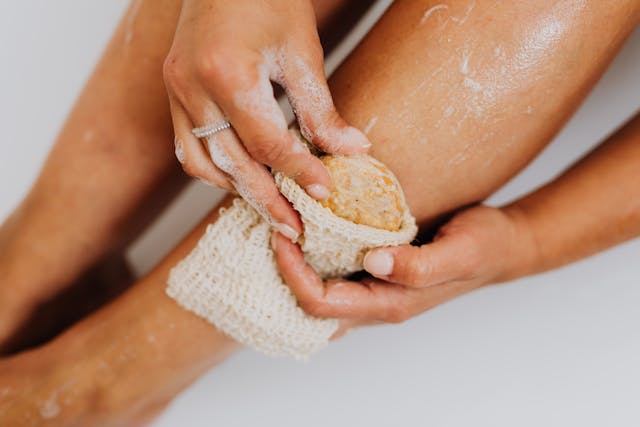While many desire glowing skin, navigating skin care routines can feel complicated. Especially with exfoliation, there are several do’s and don’ts that can overwhelm you. Fortunately, this personal care regimen is not complex. Discover why exfoliation is essential and which method suits your skin type best.
What is exfoliation and why is it important?
Exfoliation is the process of removing dead skin cells from the skin’s surface. It helps improve blood circulation and brightens the appearance of the skin. In a regular skin care regimen, exfoliation products come after cleansing and before moisturizer. These products can dry out the skin, so avoid using them daily.
Prolonged exfoliation increases collagen production. As you get older, your body produces less collagen protein that is crucial for improving skin elasticity and reducing signs of aging. If you want to look and feel your best, consider incorporating exfoliants into your skin care routine.
The 2 types of peeling
People exfoliate in two ways: physically and chemically. Both processes aim to remove dead skin cells for improved skin appearance and prevent product buildup that causes clogged pores. Understand how each works before you begin your exfoliation journey.
Physical exfoliation – or mechanical exfoliation – involves physically scrubbing a product onto your skin. The downside to this process is that you may be scrubbing too vigorously lead to damage to the skin barrier and irritation. Examples of physical exfoliators include ground coffee beans, ground sugar, scrubs, brushes and beaded products.
Chemical exfoliation uses alpha hydroxy acids (AHAs) and beta hydroxy acids (BHAs) to remove dead skin cells. This method also delivers anti-inflammatory properties, eliminating redness, rosacea and skin cleansing.
AHAs are gentler on the skin and help treat superficial problems such as hyperpigmentation and enlarged pores. On the other hand, BHAs are ideal for acne-prone and oily skin types as they can penetrate the deeper layers of the skin and remove excess oil.
How to exfoliate based on your skin type
Both exfoliating types are beneficial for the skin. Because they have different properties, it is crucial to determine which method best suits your skin type to avoid irritation and a compromised skin barrier.
Sensitive skin
If your skin is prone to itching and redness, opt for a gentle chemical exfoliant, such as glycolic acid or lactic acid. Avoid physical exfoliators as they are often too aggressive and lead to further sensitivity.
Before exfoliating, wash your face with a gentle cleanser and pat dry with a clean washcloth. Use a towel made from 100% Aegean cotton — a type of Turkish cotton with strong, fluffy fibers, free of chemicals, for sensitive skin. Exfoliate once or twice a week to avoid irritation.
Acne prone skin
Acne is a common skin problem up to 50 million Americans annual. If you are prone to breakouts, opt for chemical exfoliants that contain salicylic acid. These help reduce redness and unclog clogged pores, which can help shrink pimples. Exfoliate 2-3 times a week.
Dry skin
One thing to remember when exfoliating dry skin is to avoid physical exfoliators, as they are drying. Choose gentle products with glycolic acid to stimulate healthy skin renewal. Also, apply SPF sunscreen in the morning and moisturizer in the evening to rehydrate your skin. For dry skin: exfoliate only once or twice a week.
Oily skin
Use physical exfoliators to remove all layers of grime from the skin. Natural exfoliants – such as jojoba seeds or microbeads – eliminate dead skin cells and improve circulation. You can also use BHAs such as salicylic acid or citric acid 2-3 times a week to dry out excess oil.
Combined skin
If you have combination skin, this means that you need to treat both dry and oily areas of the face. You can use physical and chemical exfoliators to remove dirt and dead skin cells, such as oily skin. However, you should never use both on the same day as they can cause irritation. Use a mild physical or chemical exfoliant with AHAs 2 to 3 times a week to avoid over-stripping the skin.
Exfoliate properly
Exfoliation may seem like a challenge if you’re just starting your skincare journey. Use this guide to help you determine which type of exfoliation method is best for your skin type. By doing this, you can avoid wasting money on trendy products that may not effectively address your skin concerns.





